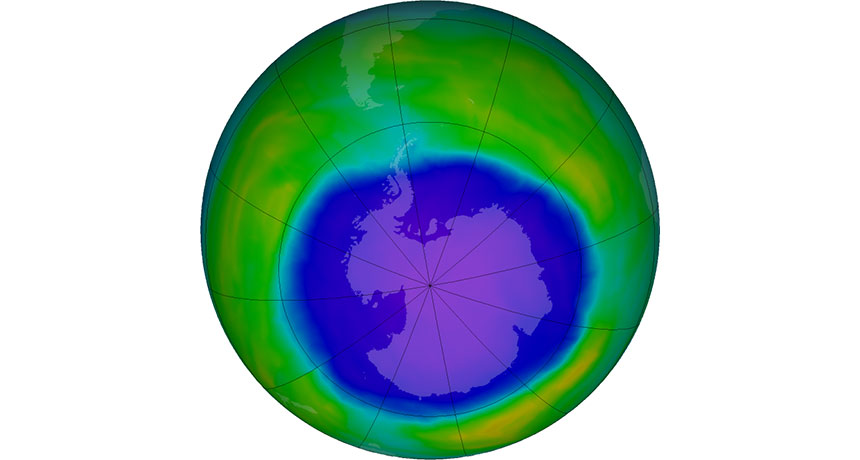Despite volcanic setback, Antarctic ozone hole healing

A gaping wound in Earth’s atmosphere is definitively healing. Since 2000, the average size of the Antarctic ozone hole in September has shrunk by about 4.5 million square kilometers, an area larger than India, researchers report online June 30 in Science. While the hole won’t close completely until at least midcentury, the researchers say the results are a testament to the success of the Montreal Protocol. That international treaty, implemented in 1989, banned ozone-depleting chemicals called chlorofluorocarbons worldwide.
Ozone helps shield life on Earth from hazardous ultraviolet radiation. Tracking the ozone layer’s recovery process is tricky because natural phenomena such as volcanic eruptions and weather variations can alter the size of the ozone hole. While some earlier studies suggested that the ozone had already begun healing (SN: 6/4/11, p. 15), many scientists questioned whether the work had been detailed enough to separate out the effects of natural variability.
MIT atmospheric scientist Susan Solomon and colleagues used a sophisticated 3-D atmospheric simulation to distinguish between the forces acting on atmospheric ozone. The work suggests that about half of the ozone hole’s recent shrinkage resulted from a drop in chlorofluorocarbons in the atmosphere; the remainder stemmed from weather changes.
Volcanic eruptions obscure healing signs. Last October, the ozone hole reached a record-setting average size of 25.3 million square kilometers — an area larger than Russia — thanks to the April 2015 eruption of Chile’s Calbuco volcano. That large size doesn’t disprove that the ozone hole is healing in the long run, though. Without the temporary 4.2-million-square-kilometer boost from the volcano, the hole’s average size would have peaked at a more modest 21.1 million square kilometers, the researchers estimate.